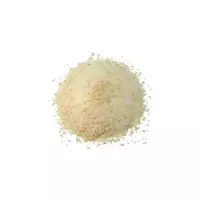Table salt

Table salt is a well-known food product, without which it is difficult to imagine the process of preparing any dish. In appearance, these are small white crystals, the hue of which can vary depending on the degree of purification and the presence of impurities of other mineral salts. You can find table salt in different types: unrefined and purified, clean and iodized, coarse and fine grinding, marine and many others.
Table salt can be called an essential food substance, because in the human body it is not "produced. " In this regard, this mineral should enter the body daily. By the way, about twenty percent of the salt that comes from food is needed to produce enough gastric juice. And the beneficial properties of table salt are also manifested in the fact that it activates some enzymes that maintain the acid-base balance in the body. Lack or complete absence of salt in food can cause various disorders. They are manifested by a decrease in blood pressure, an increase in heart rate, muscle cramps, general weakness and other signs.
Meanwhile, excessive amounts of salt consumed contribute to the retention of excess water in the body, which leads to stress of the heart muscle and kidneys, causes headaches and swelling.
Thus, it is important to note that the daily intake of salt should not exceed ten grams. Doctors recommend learning how to monitor the content of this product in food daily. For example, sausage, olives, brynza, smoked and salted fish, sauerkraut are distinguished by a very high content of this substance. Its large amount is also contained in natural alkaline mineral waters. The calorie content of table salt, interestingly, is almost zero.
The benefits of table salt
Given that this product is a vital element for people who suffer from type 1 diabetes, the benefit of table salt is due to the ability to regulate blood sugar levels, thereby reducing the need for insulin.
The benefits of table salt for the body are also quite obvious due to the fact that it is simply necessary to normalize acidity in the intracellular environment, which is especially important for brain cells. That is why the use of diuretics and salt-free diets that flush out salts and minerals from the body increase the risk of developing Alzheimer's disease.
Damage to table salt
The dangers of table salt can be talked about in the case of diseases of the cardiovascular system with impaired blood circulation, kidneys and liver (with edema), with hypertension, rheumatism, as well as obesity. Doctors strongly recommend that such patients limit or even exclude this product from their diet.
table salt 1 kCal
Energy value of table salt (Ratio of proteins, fats, carbohydrates - ju):
Proteins: 1 g (~ 4 kCal)
Fats: 1 g (~ 9 kCal)
Carbohydrates: 1g (~ 4kCal)
Energy ratio (b | y): 400% | 900% | 400%
 Español
Español Français
Français Português
Português Русский
Русский 简体中文
简体中文 繁體中文
繁體中文 日本語
日本語 한국어
한국어 العربية
العربية Türkçe
Türkçe Қазақ
Қазақ Deutsch
Deutsch Italiano
Italiano Українська
Українська
